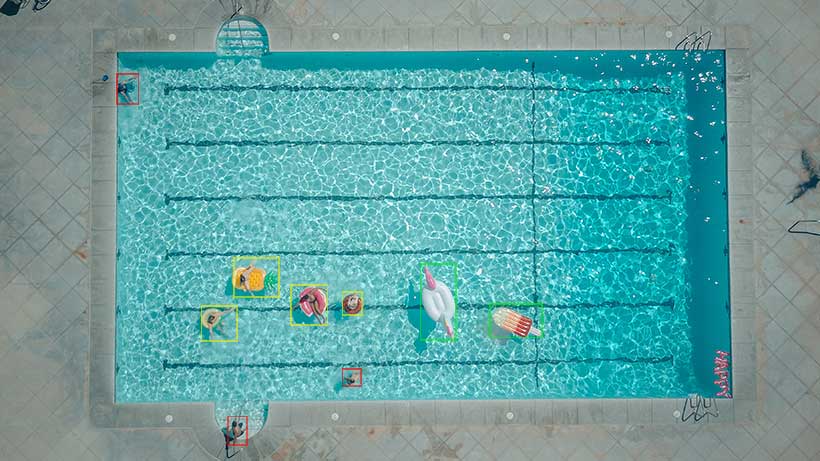Making Pools Safer with Data Annotation

The United States’ Centre for Disease Control and Prevention estimates that around 10 Americans die from unintentional drowning every day. Tragically, many of these accidents involve young children and residential pools. Unsupervised and unfenced pools can lead to drowning incidents occurring without the knowledge of parents or guardians.
More and more focus is being turned towards this issue as the popularity of home pools grows. AI developers are now stepping in with systems that have the potential to dramatically improve pool safety and save lives.
This blog will address some of the key issues that need to be solved by AI companies in this sector. Machine learning is creating computer vision models that can address these problems. In order to progress this important technology developers are looking to collaborate with image annotation providers, like Keymakr, to construct high quality training datasets.
The problem
Pools are usually protected with fences and covers that prevent access. However, these measures are only useful when the pool is not being used, in many homes pools are regularly left open and unattended. An integrated system that watches the pool, above and below water, could be much more useful for consumers. Simple movement detections systems can alert users if somebody is in the pool.
However, these kinds of alarms need to be activated and deactivated when entering and leaving the pool. This can easily be forgotten, leaving the pool area unguarded.
A fully automated pool safety system must be able to recognise when somebody is entering the pool at any time. It must be able to distinguish between the shape of humans and other objects, such as pool toys or debris. Crucially, smart pool safety ecosystems must be able to recognize signs of distress and drowning without constantly raising the alarm due to false detections. The only way to accomplish this kind of integrated, functional system is with the help of computer vision based AI.

AI based solutions
Images and video can be used to train pool safety AIs to constantly monitor the water. Rather than sensing water movement, AI back cameras can “see” who is in the water and interpret their behaviour. For example, if a child is motionless in the water, with their head submerged, the system will trigger an alarm and send smartphone notifications which should allow enough time for rescue and first aid. AI training allows smart cameras to tell the difference between a human and any other object, greatly reducing the amount of unnecessary alarms.
Smart pool systems can also monitor visibility levels under water, alerting users when detection is impaired. Similarly at night these systems can turn on lights if they detect somebody entering the pool. Machine learning exposes models to thousands of images of pools with different people and objects present. This allows AI powered cameras to accurately distinguish relevant information in a complex and changing environment.
Data annotation collaboration
AI based pool safety ecosystems have the capacity to save thousands of lives in the coming years, if they are taken up widely. To maintain confidence and consumer interest in these products manufacturers must ensure that their products function well when needed, and are unobtrusive when not. Continued development of pool monitoring devices depends on access to varied and precise annotated image and video data.

Keymakr is a professional annotation service that can streamline data annotation for companies in this sector. Outsourcing annotation can remove a significant burden from AI developers, allowing them to focus on their core project goals.
Keymakr’s proprietary technology and in-house teams of experienced annotators help ensure accurate data labeling, delivered on time and at scale.
Contact a team member to book your personalized demo today.



